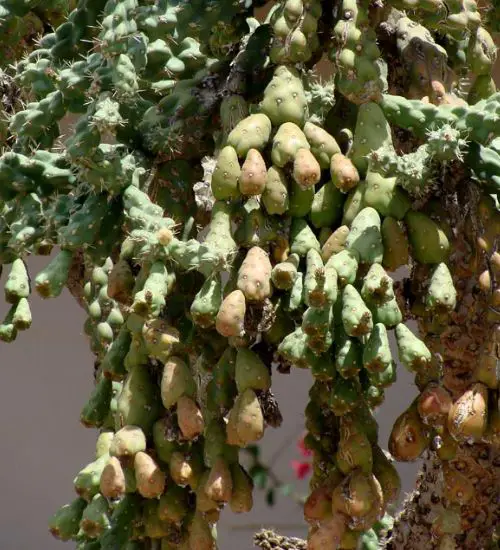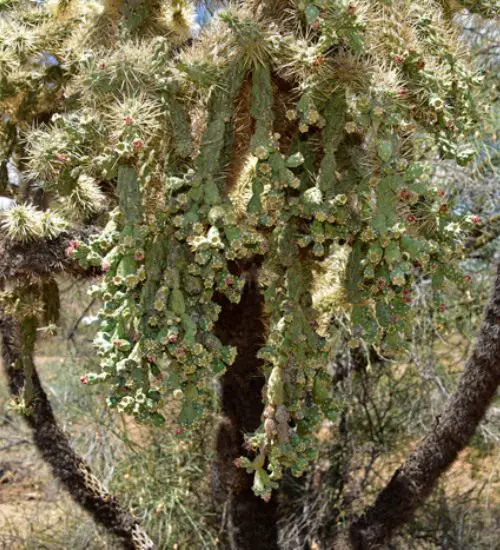Sun: full sun to partial shade
Water: Typical water needs for a succulent
Temperature: Zone 8b from 15° F to 20° F (-9.4° C to -6.7° C) to Zone 11b from 45° F to 50° F (7.2° C to 10° C)
Winter Survival: Cold hardy to 0°C
Propagation: stem cuttings
Flower: in the summer
Flower Type: white, pink
Toxic: Generally non-toxic to humans and animals
Dormant: winter
Space Requirement: Outdoors
Common Problems:
Where to buy Cylindropuntia fulgida?
Basc Care for Cylindropuntia fulgida
Watering
Watering for Cylindropuntia fulgida is a simple task. It requires Typical water needs for a succulent.
Regular watering period should be every 2 weeks
Fertilizing
Only feed this succulent during its active growing seasons which means winter. Use the right fertilizer applied in the right amounts. Applying half-strength balanced fertilizer every month or so is recommended for optimal results.
Do not fertilize during winter as the plant is dormant.
Sun & Location Requirements for "chain fruit cholla, Jumping Cholla, cholla brincadora, and velas de coyote."
Cylindropuntia fulgida requires full sun to partial shade. It's best to keep it in an area of your garden or home that gets plenty of bright, indirect sunlight throughout the day. When temperatures are too hot and direct sunlight is too intense, try moving "chain fruit cholla, Jumping Cholla, cholla brincadora, and velas de coyote." to a shadier spot for part of the day.
As per this succulent profile, it is only able to stay healthy when the environment temperature is above the range of zone 8b from 15° F to 20° F (-9.4° C to -6.7° C).
Cylindropuntia fulgida is a cold-hardy variety that can survive temperatures as low as 0°F. Its thick, succulent leaves and stems act as insulation and help retain moisture in winter months, while its deep root system allows it to survive even the harshest cold conditions. It is an incredibly resilient species that has adapted to its environment and can withstand extreme temperatures.
Any succulents in the group will need a large space to grow. You should place your pot outdoor. Since this plant needs a lot of space than other succulents, you should consider not planting them together with other succulents/plants.
Cylindropuntia fulgida also benefits from some indirect light throughout the day as well, so make sure you give it enough space to soak up light without becoming too exposed to heat.
Propagation
One of the easiest and most popular ways to propagate Cylindropuntia fulgida is by stem cuttings. This method involves cutting a stem from an existing succulent and planting it in soil to grow a new plant.
Toxicity

Cylindropuntia fulgida is generally non-toxic to humans and animals. However, it is important to be aware that certain parts of the plant may contain toxins which can cause mild skin irritation. It is advised that you keep the plants away from small children or pets, as they may unknowingly ingest them and suffer ill effects.


